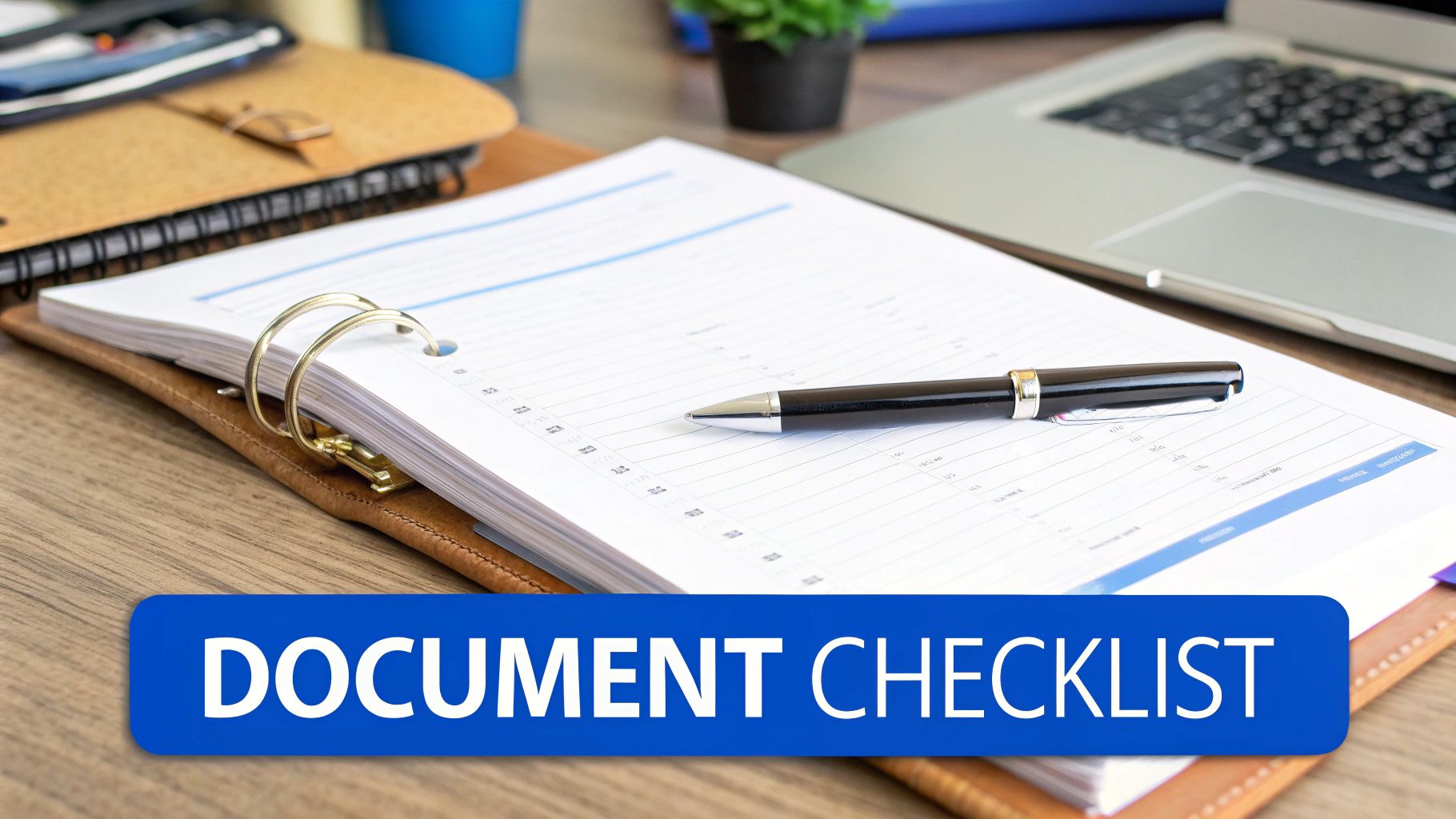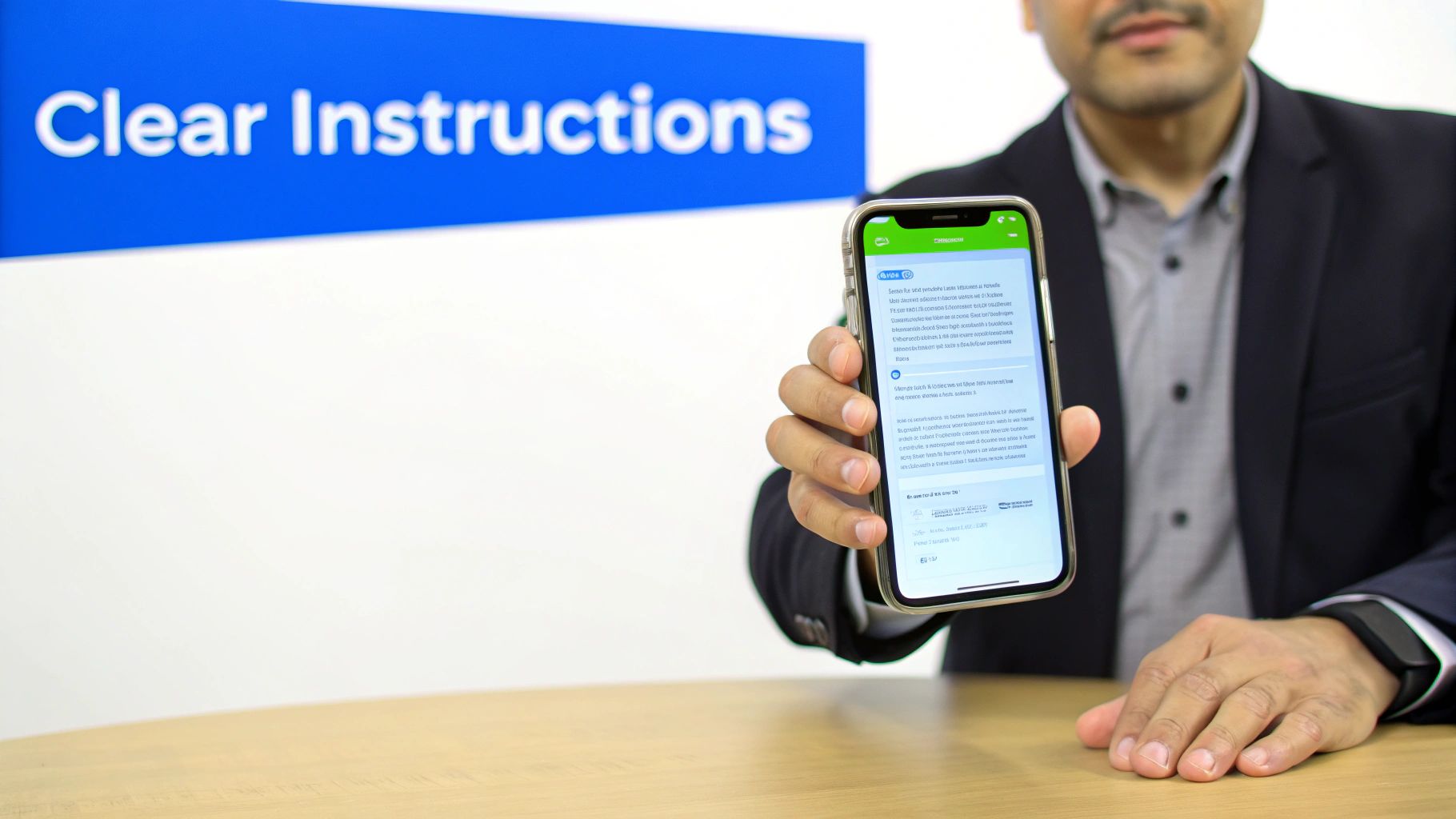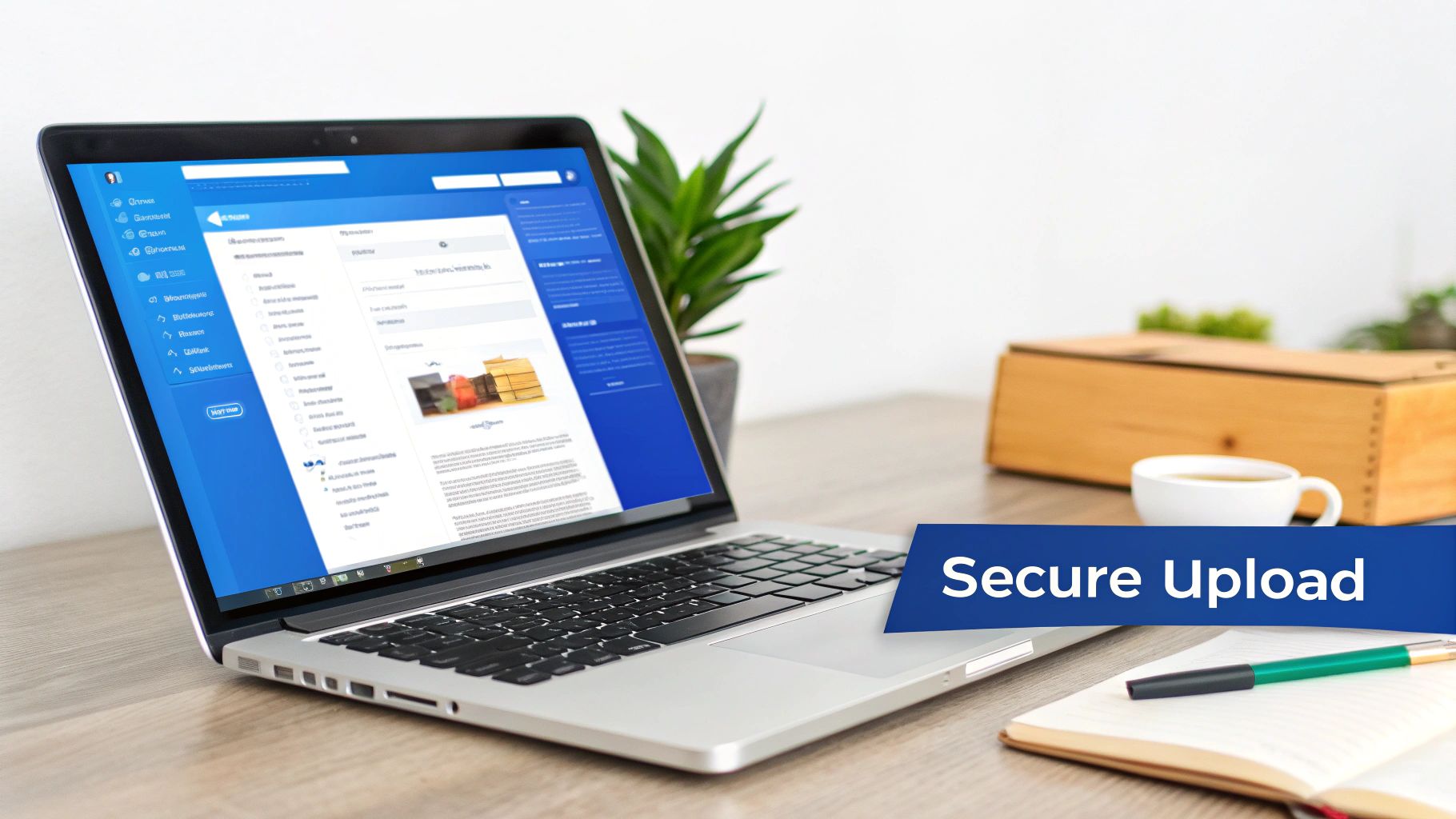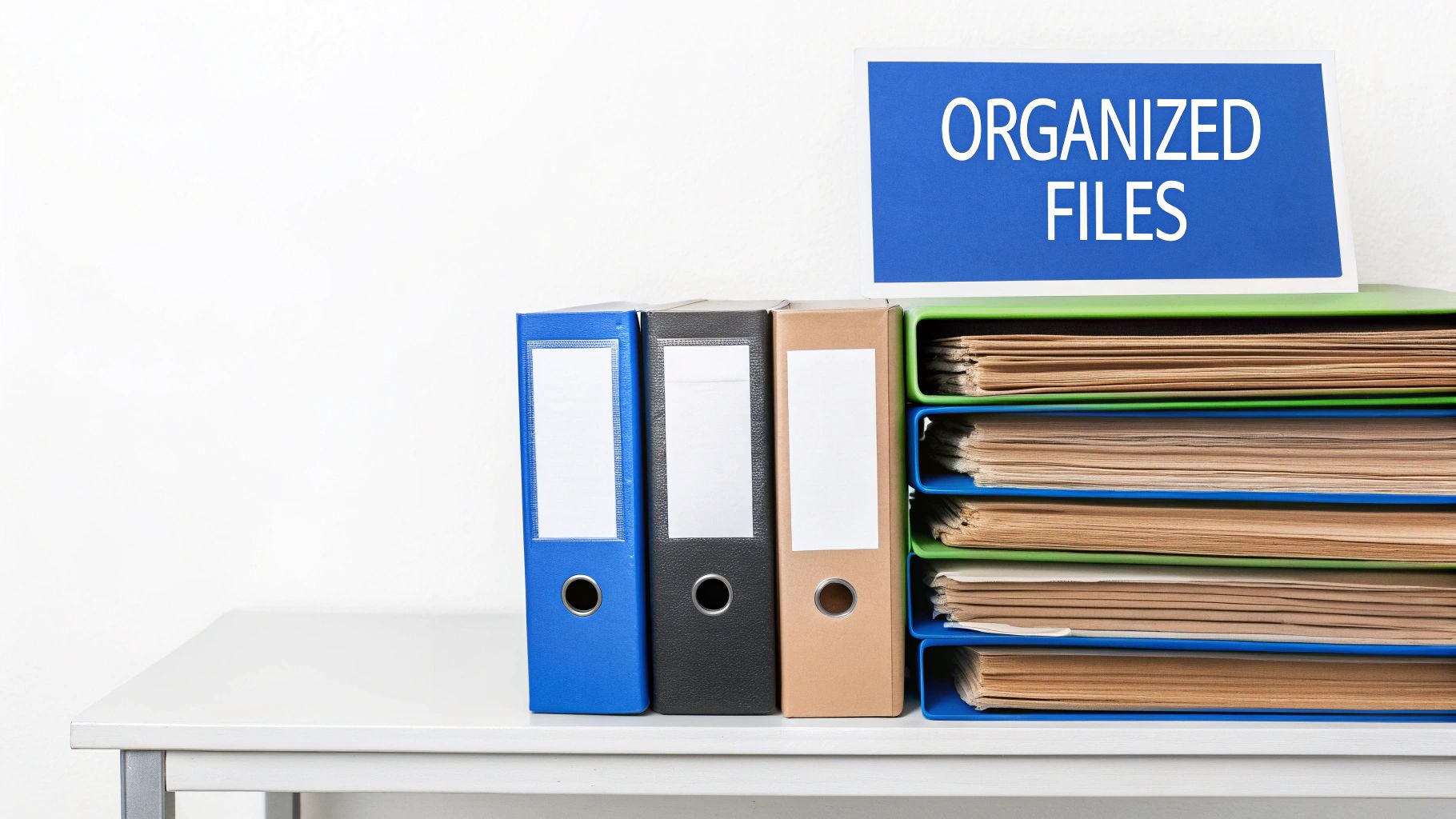The Business Impact of Streamlined Document Collection

Collecting client documents is often seen as a simple administrative task. However, its true impact goes much deeper. Inefficient document collection can significantly hinder a business’s overall performance, affecting everything from project timelines and client relationships to the bottom line. Streamlining this process is not just convenient; it’s strategically essential.
Think about the delays caused by chasing missing documents. These extended project timelines can lead to missed deadlines, frustrated clients, and ultimately, lost revenue. The administrative burden of managing paper-based workflows or disorganized digital systems contributes to staff burnout and reduced productivity. These hidden costs often go unnoticed, quietly impacting a company’s profitability.
A cumbersome document collection process can also negatively impact client satisfaction. Clients may become frustrated with repetitive requests, confusing instructions, or insecure methods for sharing sensitive information. This can erode trust and may even lead clients to seek services elsewhere.
Table of Contents
Document Collection Across Industries
Collecting documents is a crucial process across various industries, particularly in sectors like finance and law where accurate documentation is paramount. The global document management system market, encompassing tools for collecting, processing, and managing client documents, was valued at USD 4.89 billion in 2019. It’s projected to reach USD 10.17 billion by 2025, representing a CAGR of 13.04% between 2020 and 2025.
This growth is driven by the need for greater workplace efficiency. Businesses are actively seeking ways to optimize document management and reduce reliance on outdated paper-based systems. Studies show 46% of employees in small and medium-sized businesses still lose time daily due to inefficient, paper-related workflows. This highlights the significant potential of sophisticated document management systems to improve these processes and give companies a competitive edge.
The Benefits of Efficient Document Collection
Streamlined document collection offers numerous advantages:
- Faster Project Completion: Efficient systems minimize delays, ensuring projects stay on track and meet deadlines.
- Improved Client Satisfaction: A user-friendly process creates a positive client experience, building trust and loyalty.
- Reduced Costs: Automating tasks and reducing errors minimizes administrative overhead, freeing up valuable resources.
- Increased Productivity: Streamlined workflows allow staff to focus on more important tasks, boosting overall productivity.
- Enhanced Security: Secure digital platforms safeguard sensitive client information, minimizing the risk of breaches.
By optimizing document collection, businesses can achieve significant improvements in efficiency, client satisfaction, and profitability. This requires a shift in perspective – from viewing document collection as a mundane task to recognizing its strategic importance. Transitioning to a more strategic approach, perhaps by learning how to master industry best practices, can transform how businesses operate and interact with clients.
Designing a Client-Friendly Document Request System

What makes collecting documents from clients a breeze instead of a burden? Often, it comes down to how you design the request system. A client-focused approach can dramatically improve completion rates and create a better overall experience. This means thinking carefully about every interaction, from the first request to the final submission. Leading organizations are finding new ways to collect documents, focusing on making the process clear and easy to use.
One key element is using simple, direct language in request templates. Industry jargon and technical terms can confuse clients, causing delays and errors. Instead, use plain language that everyone can understand. This straightforward approach removes confusion and ensures clients know exactly what they need to provide.
A progressive disclosure method can also prevent clients from feeling overwhelmed. Rather than presenting a long list of required documents at once, reveal information step by step. This makes the process feel much more manageable.
Establishing Clear Expectations and Guidelines
Setting reasonable deadlines is essential. This balances your operational needs with your client’s convenience. Give clients enough time to gather and submit documents without pressure. At the same time, make sure deadlines align with project requirements to avoid unnecessary hold-ups.
Clear submission guidelines are also vital. Specify acceptable file formats, naming conventions, and any other relevant information. This reduces confusion and ensures clients submit documents correctly.
Automated reminders can be very helpful for keeping the process moving. However, these reminders should be carefully worded to avoid sounding demanding. Personalized messages sent at appropriate intervals strike the right balance between helpful nudges and excessive notifications.
Streamlining document collection significantly impacts your business. To delve deeper into effective strategies, explore these document management best practices.
Creating an Effective Document Request Template
A well-designed document request template forms the basis of an efficient collection process. It should be easy to understand and give clients all the information they need to submit their documents successfully. The table below outlines the key components of an effective template.
To help illustrate how to create effective document requests, we’ve compiled a table outlining the key components. This table offers practical examples and explains the purpose of each element.
| Component | Purpose | Example |
|---|---|---|
| Clear Title | Briefly and accurately describes the request | “Required Documents for Loan Application” |
| Introduction | Explains the purpose of the request and its importance | “Please provide the following documents to complete your application.” |
| Document List | Itemizes each required document with clear descriptions | “Proof of Income (e.g., pay stubs, tax returns)” |
| Submission Instructions | Explains how to submit documents (e.g., upload, email) | “Upload documents securely through this portal” |
| Deadline | Specifies the due date for submission | “Documents are due by [Date]” |
| Contact Information | Provides contact details for questions or assistance | “Contact us at [Email/Phone Number]” |
This template provides a clear framework for creating effective document requests, ensuring clarity and efficiency in the process.
Leveraging Technology for Enhanced Efficiency
Technology is key to optimizing document collection. Solutions like Superdocu offer secure client portals, automated reminders, and streamlined workflows. These tools simplify document management, reduce manual work, and greatly improve the client experience. This approach transforms a typically cumbersome process into an efficient and user-friendly system.
Added features like branded portals and custom request links provide a professional touch, building trust and credibility with clients. By implementing these design principles, businesses can build a client-friendly document request system that boosts efficiency, improves client satisfaction, and contributes to overall business success. This proactive approach turns a potential frustration into a seamless, positive experience for both clients and staff.
Digital Transformation of Client Document Collection

Collecting client documents used to involve fax machines and postal services. Now, businesses are adopting digital solutions to streamline this process. This shift improves convenience and fundamentally changes how businesses interact with clients. This section explores the technologies reshaping document collection, from secure client portals to dedicated software.
Exploring Modern Document Collection Technologies
Secure client portals have revolutionized document collection. They offer a centralized, secure platform for clients to easily upload documents. This eliminates the need for email attachments, which can be cumbersome and pose security risks. Specialized platforms offer features like automated reminders, progress tracking, and e-signatures, increasing efficiency and client satisfaction.
To ensure a smooth process, consider these client communication best practices. Integrating these tips into your document request system can significantly improve client engagement.
For example, a mortgage broker previously using email and physical mail can now implement a secure client portal. Clients then have a convenient and secure way to upload documents, reducing processing time and improving their overall experience.
Transitioning to Digital Workflows
Many organizations have moved from manual document collection to digital workflows. This transition presents challenges like staff training, integrating with existing systems, and client adoption. However, the benefits often outweigh the challenges.
The growing document processing and editing services market shows this trend. This global market expansion is driven by cloud-based solutions and technologies like AI and machine learning. More detailed statistics are available here.
Evaluating and Implementing Solutions
Choosing the right document collection solution depends on your business needs, security requirements, and existing technology. A small business might use a basic client portal. A larger organization might need a more comprehensive platform with features like workflow automation and CRM integration.
To help you compare different approaches, let’s look at a helpful table.
The following table compares traditional and digital document collection methods across several key aspects.
Comparison of Document Collection Methods: Comparing traditional vs. digital approaches to collecting client documents
| Method | Security Level | Client Experience | Processing Efficiency | Cost |
|---|---|---|---|---|
| Traditional (Mail, Fax) | Low | Poor | Low | Moderate |
| Digital (Client Portal) | High | Excellent | High | Low |
| Digital (Dedicated Software) | High | Excellent | High | Moderate to High |
This table highlights the advantages of digital methods, particularly in security, client experience, and processing efficiency. While traditional methods might have lower upfront costs, the long-term benefits of digital solutions make them a worthwhile investment.
Measuring ROI and Gaining Stakeholder Buy-In
When upgrading document collection, assess the potential return on investment (ROI). Consider factors like reduced processing time, lower administrative costs, and improved client satisfaction.
Gaining stakeholder buy-in is crucial. Clearly communicate the benefits of digital transformation and address any concerns about the transition. Digital document collection empowers businesses to operate more efficiently, improve client relationships, and stay competitive.
Securing the Document Collection Pipeline

When collecting documents from clients, security is paramount. It’s not just about protecting data; it’s about building trust and fulfilling professional responsibilities. This involves implementing security measures throughout the entire document collection process.
It also means understanding and complying with relevant industry regulations. These regulations often dictate how sensitive information is handled, especially in sectors like healthcare and financial services.
Implementing Robust Security Measures
Successful organizations prioritize both security and a smooth client experience. They achieve this by utilizing secure platforms with features like encryption and two-factor authentication. This approach protects data while ensuring a user-friendly process.
Regular vulnerability assessments are also crucial. These assessments identify weaknesses in your document collection process before they become a problem. For example, an assessment might reveal issues with access controls or outdated software.
Addressing these vulnerabilities proactively is key to maintaining a strong security posture. Having response protocols for potential data breaches is equally important. This includes a plan for containment, notification, and system restoration.
A well-defined response protocol minimizes damage and shows clients you take security seriously. This preparedness helps maintain trust and confidence in your services.
The document analysis market is experiencing rapid growth. In 2024, the market was valued at $3.35 billion and is projected to reach $5.03 billion in 2025. This represents a significant 50.1% CAGR. Find more detailed statistics here.
Communicating Security Practices With Clients
Transparency about security practices is essential for building client trust. Communicate the steps taken to protect their information, without causing undue concern. This can be done through clear privacy policies, FAQs, and other helpful resources.
For instance, explain how data is encrypted and stored. Reassure clients that their data is safe by explaining your commitment to data privacy and the measures you employ. This open communication strengthens professional relationships.
Check out our guide on managing different document categories for more helpful information.
Best Practices for Secure Document Collection
- Use secure platforms: Choose platforms with strong security features like encryption, two-factor authentication, and secure storage.
- Implement access controls: Limit access to sensitive documents to authorized personnel.
- Conduct regular audits: Review your security practices and update them as needed.
- Train your staff: Ensure your team is well-versed in security protocols and best practices.
- Communicate with your clients: Be open about your security measures and keep them informed of any changes.
By following these practices, you can create a secure document collection pipeline that protects client data and builds trust. This proactive approach strengthens your reputation and shows your commitment to responsible data handling. Robust security is not just a good idea; it’s essential.
Breaking Through Client Resistance When Requesting Documents
Collecting documents from clients can sometimes feel like an uphill battle. Delays, incomplete submissions, and unresponsive clients can disrupt workflows and test anyone’s patience. Understanding the reasons behind this resistance is the first step toward finding solutions that work. Let’s dive into how we can get the documents we need without straining client relationships.
Understanding the Psychology of Document Reluctance
Client hesitation often stems from several key concerns. Data privacy and security are major factors, especially when dealing with sensitive information. Think financial records or personal identification – clients naturally want to ensure these details are safe. Another common reason is simple procrastination. Busy schedules and a perceived lack of urgency can lead clients to put off tasks. Sometimes, the process itself might be confusing or overwhelming. Unclear instructions or a long list of required documents can create a barrier. Finally, technology aversion can play a role, with some clients struggling with digital platforms or preferring traditional methods.
Effective Communication Strategies
Clear, empathetic communication makes all the difference. Frame your requests in terms of client benefits. For example, instead of “We need these documents to proceed,” try, “Submitting these documents helps us expedite your request and get things moving faster for you.” This client-centric approach encourages cooperation.
A well-planned follow-up process is also essential. Start with gentle reminders, gradually increasing urgency while maintaining a helpful tone. Offer support for any difficulties and provide various contact options. This demonstrates your commitment to their success.
Incentivizing Prompt Document Submission
Consider offering incentives for timely document submission. This could be a small discount, expedited processing, or access to valuable resources. However, use incentives carefully and ethically, ensuring fairness and transparency.
Addressing Specific Client Challenges
Provide alternatives like phone support or in-person appointments for clients less comfortable with technology. Explain the advantages of digital platforms while acknowledging their concerns. Patience and understanding are crucial.
When handling sensitive information, reassure clients about your security measures. Explain your data protection practices clearly and simply, and provide resources that address privacy questions. Building trust is paramount.
Implementing Scripts and Templates
Standardized scripts and templates for document requests and follow-ups streamline communication and ensure consistency. These tools can be tailored to specific client groups and situations, maintaining professionalism and clarity. Superdocu offers features to simplify these processes, making document collection more efficient.
Understanding the reasons behind client resistance and implementing these strategies can turn document collection into a smooth, positive experience. This boosts efficiency and strengthens client relationships, paving the way for long-term success.
Building an Automated Document Collection Ecosystem
Collecting client documents efficiently is more than just going digital. Leading organizations are building automated ecosystems that minimize manual work and streamline the process. This approach shifts document collection from a reactive task to a proactive, integrated part of the client lifecycle. Let’s explore how to build such a system.
Identifying Automation Opportunities
The first step is analyzing your current document workflow. Find the bottlenecks and repetitive tasks that are best suited for automation. For example, are your employees spending hours sending individual document requests? Are there delays because of manual follow-ups? Identifying these pain points reveals opportunities for improvement. This initial assessment sets the stage for a more efficient system.
Implementing Document Request Triggers
Automation excels at triggering document requests based on specific events in the client lifecycle. For instance, onboarding a new client could automatically trigger a request for required identification documents. Reaching a specific project milestone could trigger a request for progress reports. This ensures timely document collection without manual intervention, keeping projects on track. Furthermore, integrating with your CRM allows automated requests based on client data, like contract renewals or approaching deadlines.
Personalizing the Collection Experience With Conditional Logic
Conditional logic creates a personalized client experience. Imagine a system that tailors document requests based on client type or service level. This personalization reduces client confusion and encourages prompt submissions. For example, different client segments might need documents. Conditional logic automates this selection, delivering exactly what’s needed. This targeted approach improves both efficiency and client satisfaction.
Integrating With Existing Business Systems
Successful implementations often connect document collection with existing tools like CRMs and project management software. This integration creates seamless information flow and eliminates redundant data entry. Integrating with your CRM, for example, automatically adds client information to document requests and updates records with submitted documents. This ensures data consistency and saves time. For project management, automatic document routing based on project stage keeps everyone informed and projects moving forward.
You might be interested in: How to master document collection through our comprehensive sitemap.
Phasing in Automation and Measuring Impact
Implementing automation doesn’t mean a complete system overhaul. A phased approach lets you introduce changes gradually, minimizing disruption. Start small, perhaps with onboarding new clients. After achieving success, expand automation to other areas. Track key metrics like document completion time and staff workload to measure the impact. This data-driven approach ensures continuous improvement.
Continuously Refining Your Processes
Automated document collection isn’t a set-it-and-forget-it solution. Regularly review your processes and client feedback. Look for areas to optimize, refine triggers, and adjust conditional logic as needed. This ongoing refinement keeps your system efficient and client-friendly, maximizing its value. By building an automated ecosystem, you can transform how you collect documents, improving efficiency, client satisfaction, and ultimately, your bottom line.
Measuring Success in Your 2.0 Document Collection Process
Having a well-designed document collection process is essential for any business. But how do you measure its effectiveness? Simply having a system in place isn’t enough. You need to track its success and continually improve it. This means setting clear metrics, gathering client feedback, and creating a culture of optimization. This section outlines a data-driven approach to evaluating and refining your document collection process, helping you collect documents from clients with maximum efficiency.
Key Performance Indicators (KPIs) for Document Collection
The first step in measuring success is choosing the right Key Performance Indicators (KPIs). These metrics give you quantifiable data on how well your process is working. Here are some key KPIs for document collection:
Document Completion Rate: This KPI tracks the percentage of requested documents you successfully receive. A high completion rate usually means you have a clear and efficient process.
Average Completion Time: This measures how long it takes clients to submit all the necessary documents. Shorter completion times indicate a positive user experience.
Client Effort Score (CES): This score shows how easy it is for clients to provide documents. A low CES suggests a smooth and simple process.
Staff Time Spent on Document Collection: This KPI tracks how much time your team spends managing and following up on document requests. Less staff time spent on this task points to a more automated and efficient system.
By monitoring these KPIs, you can pinpoint areas for improvement and show the value of your document collection system. This data-driven approach helps refine your process over time.
Establishing Meaningful Benchmarks
After identifying your KPIs, you’ll want to establish relevant benchmarks. Benchmarks give you targets to aim for and help you track progress. For example, you might aim to increase your document completion rate by 5% each quarter or reduce average completion time by 2 days. These specific goals provide focus and encourage continuous improvement.
Conducting Effective Process Reviews
Regularly review your document collection process. Here are some key questions to ask:
- Are there any document requests that aren’t needed?
- Are the instructions clear and easy to follow?
- Are clients encountering any problems?
- Can any steps be automated or simplified?
Critically evaluating your process helps you identify areas for improvement and create a smoother experience for your clients. Just as online file request checklists improve workflow for legal professionals, regular reviews strengthen your entire system. This proactive approach ensures you collect documents from clients more efficiently.
Gathering and Utilizing Client Feedback
Client feedback is essential. Set up ways to collect feedback, such as surveys, feedback forms, or client interviews. Use this feedback to make improvements, like clarifying instructions or simplifying submission methods. For example, if clients consistently struggle with a specific upload portal, consider switching to a more user-friendly platform like Dropbox.
Maintaining Team Engagement in Continuous Improvement
Get your team involved! Encourage them to find areas for improvement and suggest solutions. Regularly share progress updates and celebrate successes. By fostering a culture of continuous improvement, you ensure your document collection process is always being refined. This collaborative approach can uncover valuable insights.
Streamline your document collection process with Superdocu. Learn more about Superdocu and how it can transform your workflow.
